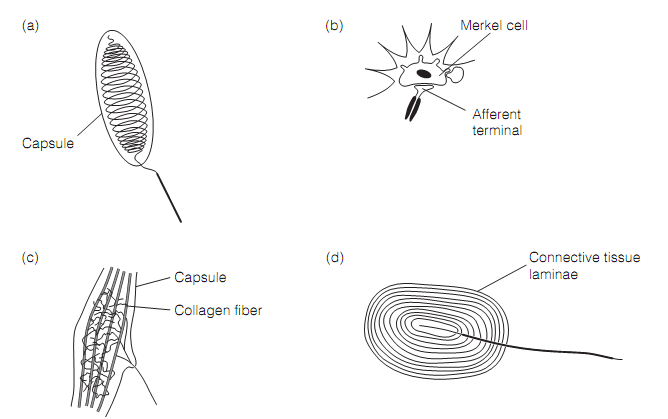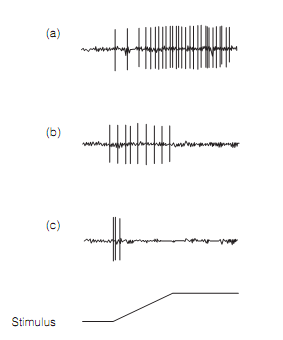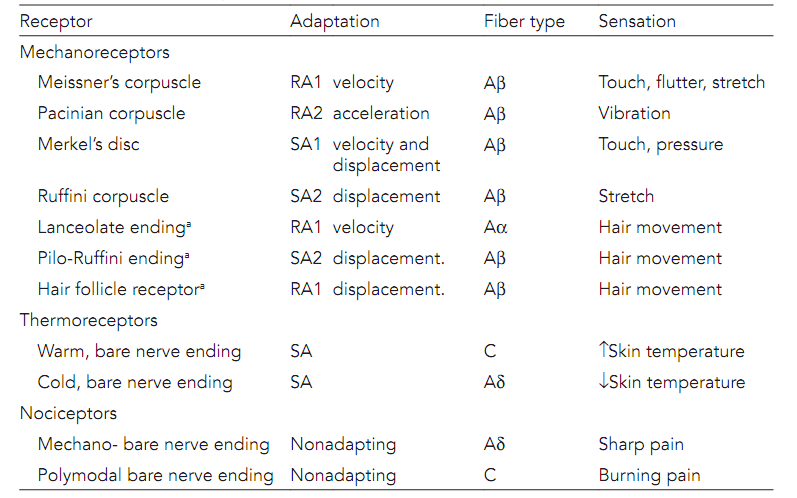Mechanoreceptors
The Skin mechanoreceptors as shown in figure below are categorized as slowly or rapidly adapting (SA or RA correspondingly) and, individually, as being of two types, type I and II, distinguished by their position and receptive fields (RFs).

Figure: Morphology of glabrous skin mechanoreceptors: (a) Meissner’s corpuscle; (b) Merkel’s disc; (c) Ruffini corpuscle; (d) Pacinian corpuscle.
The Ruffini organ is slowly adapting therefore its afferent has a frequency of firing which is directly proportional to the extent to which the overlying skin is indented by a mechanical force. This receptor codes the skin position. The Meissner’s corpuscle is quickly adapting and its afferent fires only whenever skin displacement is changing with time. It codes the velocity by which the skin is displaced. Lastly, the Pacinian corpuscle adapts so quickly that its afferents respond to the skin acceleration. Therefore the three afferents among them encode a wealth of dynamical information about the stimulus which is as shown in figure below:

The type I mechanoreceptors are superficial, lying at the boundary of epidermis and dermis and have small RFs with the well-defined boundaries. These involve Meissner’s corpuscles and Merkel’s discs. The type II is deep in the dermis and has large RFs with badly defined edges, and includes Ruffini corpuscles and Pacinian corpuscles. The type I receptors are more directly concerned with the form and texture perception than type II. The density of type I receptors differs across the body surface being maximum in the fingertips, lips, and tongue and minimum in the trunk. Regions with higher density have proportionally greater representations in somatotopic maps. The Receptor convergence differs with receptor; while each Merkel’s disc afferent receives input from 2 to 7 receptors, a one-to-one ratio is the situation for Pacinian corpuscles and their afferents.
The Pacinian corpuscles can respond to skin indentation as small as 1 µm. The force is transmitted via the corpuscle to deform the neurite within. This causes the opening of stretch-sensitive Na+ channels in the membrane resulting in a short depolarization. The Membrane potential returns to usual extremely fast as the receptor adapts by separate connective tissue layers of the corpuscle slide over each other that relieve the neurite deformation.The Human skin is either hairy or glabrous (i.e., non-hairy). The Innervation of hairy skin varies in having a lower density of Merkel’s disks and in possessing the two additional kinds of mechanoreceptor closely related with hairs as shown in table below:

Table: Cutaneous receptors